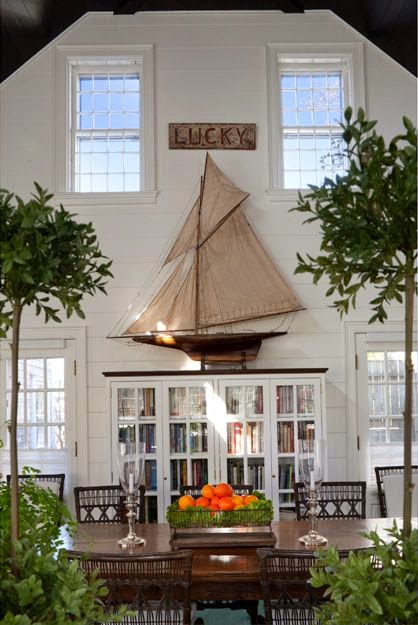The J-class yacht Ranger won the 1937 America's Cup, defeating 4-0 the Endeavour II of Britain, raced at Newport, Rhode Island. It would be the last time huge J-class yachts would race in the America's Cup.
Construction
Harold Stirling Vanderbilt funded construction of the Ranger, and it launched on May 11, 1937. It was designed by Starling Burgess and Olin Stephens, and constructed by Bath Iron Works. Stephens would credit Burgess with actually designing the Ranger, but the radical departure from conventional J-class design was more likely attributable to Stephens himself. Geerd Hendel, Burgess's chief draftsman also had a hand in drawing many of the plans.
Ranger was constructed according to the Universal Rule which determined how large various dimensions of racing yachts, such as sail area and length, could be. Often referred to as the super J, the Ranger received a rating of 76, the maximum allowed while still fitting within Universal Rule constraints.
Specifications
* Overall length: 135 ft
* Length at water line: 87 ft
* Beam (width): 21 ft
* Draft: 15 ft
* Displacement: 166 tons
In the midst of America ’s financial crisis, in the late 1920s, a yacht was being designed that would emerge as the first of a new breed. Incorporating a sleek new style, and crafted using an assortment of lightweight metals, the Enterprise yacht would soon enter into the 14th America ’s Cup Race. As the oldest international trophy competition in the world, the races allowed yacht clubs across the globe to compete for the chance to claim the title and bring the trophy home to their country. However, the previous race winning New York Yacht Club had been in possession of the trophy for 60 years, and was a favorite to defeat the challenging Royal Ulster Yacht Club.
Though America , and indeed much of the world, was in the grips of a recession, for some the races are the ultimate point of pride; Sir Thomas Lipton was one such person. Spending over a million dollars on his ship, Sir Lipton and his club presented the Shamrock V. While a beautiful craft herself, she was heavy, made of wood, and lacked the grace, finesse, and contemporary design that would see the Enterprise emerge victorious. As the smallest of the J-Class Yachts, the Enterprise began with the partnership of ship designer W. Starling Burgess and the legendary Herreshoff Manufacturing Company.
As J Class yachts, designed per Nathanael Herreshoff’s Universal Rule, each of the yachts were required to make the same rating based on calculating a number of each ship’s measurements. With this rule, any ships with similar ratings could race without having to make adjustments for various sail sizes and boat lengths. As the new designer at Herreshoff’s Manufacturing Company, inRhode Island , W. Starling Burgess set about collecting 20 years worth of data on the previous races, analyzed the wind to predict conditions on race day, and incorporated many design elements that, for the time, were quite revolutionary. Previously a designer of the M Class yachts, as well as a plane designer during the war, Burgess felt he could create the racing yacht of the future for the New York Yacht Club.
As J Class yachts, designed per Nathanael Herreshoff’s Universal Rule, each of the yachts were required to make the same rating based on calculating a number of each ship’s measurements. With this rule, any ships with similar ratings could race without having to make adjustments for various sail sizes and boat lengths. As the new designer at Herreshoff’s Manufacturing Company, in
Christian Radich is a Norwegian full rigged ship, named after a Norwegian shipowner. The vessel was built at Framnæs shipyard in Sandefjord, Norway, and was delivered on 17 June 1937. The owner was The Christian Radich Sail Training Foundation established by a grant from a cavalry and officer of that name.
The vessel is a full rigged three masted steel hull, callsign is LJLM, its homeport is Oslo, and the IMO number is 5071729. The class society is Det Norske Veritas, DNV, and its built to +1A1, E0.
The vessel is 62.5 m long, with an overall length of 73 m including the bowsprit and a maximum width of 9.7 m. She has a draught of about 4.7 meters and a displacement at full load of 1050 tons. Under engine power, the Christian Radich reaches a top speed of 10 knots, while she can make up to 14 knots under sail.
The crew is 18 all together. It can accommodate 88 passengers. The Christian Radich is well known through the international release in 1958 of the Cinemiracle widescreen movie Windjammer. The Christian Radich sailed to the United States in 1976 as part of the American Bi-Centenial Celebration, and was in at Navy Pier in Chicago, Illinois on July 4th, 1976.
The vessel was built for training sailors for the Norwegian merchant navy, and did so for many years. From 1999 and on, the ship has been on the charter market as well as sailing with paying trainees to foreign ports on summer trips, participating in the Cutty Sark Tall Ships' Race and large sail events in various European ports. She won on corrected time in Class A and overall the tall ship in total in 2007,and became the only class A vessel that crossed the finish line.
.jpg)


















0 comments:
Post a Comment